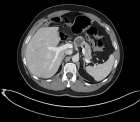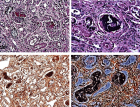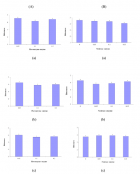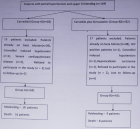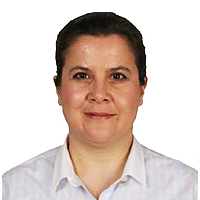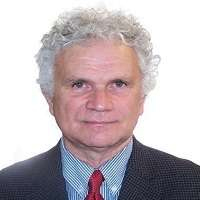Abstract
Research Article
The Effect of Cellulose Fiber on the Bending Strength of Autoclaved Aerated Concrete
Svitlana Lapovska, Nicholas Chernenko and Mykola Konoplya
Published: 26 June, 2024 | Volume 8 - Issue 1 | Pages: 045-047
Autoclaved aerated concrete is becoming an increasingly popular building material, and for good reason. It is ecological, energy efficient, strong, and durable. Studies show that the production of autoclaved aerated concrete saves 85% of energy compared to the production of heavy concrete. However, the use of steel reinforcement in large-sized aerated concrete products leads to deterioration of thermal insulation properties, corrosion, and destruction of the material. Replacing steel reinforcement with discrete fiber strands can solve this problem. The fiber does not affect the thermal insulation properties, is not prone to corrosion, and can be evenly distributed over the entire volume of the product.
Read Full Article HTML DOI: 10.29328/journal.acee.1001065 Cite this Article Read Full Article PDF
Keywords:
Autoclaved aerated concrete; Discrete reinforcement; Cellulose fibers; Bending strength
References
- Fouad F, Ramadan W, Schoch T, Kirby J. Environmental performance of autoclaved aerated concrete in the USA. ce papers. 2023; 6:5-14. https://doi.org/10.1002/cepa.2223;
- Hofmann M. CEO MHE Group. Indonesia AAC worldwide. 2: 2024.
- Bentur A, Mindess S. Fibre Reinforced Cementitious Composites. Modern Concrete Technology Series A series of books presenting the state-of-the-art in concrete technology Series.
- Pehlivanl ZO, Uzun I, Yücel ZP, Demir I. The effect of different fiber reinforcement on the thermal and mechanical properties of autoclaved aerated concrete. Constr Build Mater. 2016; 112:325–330.
- DSTU-N B V.2.7-308 Guidelines for the manufacture of aerated concrete products.
Figures:
Similar Articles
-
The Effect of Cellulose Fiber on the Bending Strength of Autoclaved Aerated ConcreteSvitlana Lapovska, Nicholas Chernenko, Mykola Konoplya. The Effect of Cellulose Fiber on the Bending Strength of Autoclaved Aerated Concrete. . 2024 doi: 10.29328/journal.acee.1001065; 8: 045-047
Recently Viewed
-
Gilbert’s Syndrome Revealed by Hepatotoxicity of ImatinibImen Ben Amor*,Imen Frikha,Moez Medhaffer,Moez Elloumi. Gilbert’s Syndrome Revealed by Hepatotoxicity of Imatinib. Ann Clin Gastroenterol Hepatol. 2025: doi: 10.29328/journal.acgh.1001049; 9: 001-003
-
The pathogenesis of psoriasis: insight into a complex “Mobius Loop” regulation processYuankuan Jiang,Haiyang Chen,Jiayue Liu,Tianfu Wei,Peng Ge,Jialin Qu*,Jingrong Lin. The pathogenesis of psoriasis: insight into a complex “Mobius Loop” regulation process. Arch Pathol Clin Res. 2021: doi: 10.29328/journal.apcr.1001024; 5: 020-025
-
Potential Use of Essential Oils and Their Individual Components in Cosmeceuticals: A ReviewHamdy A Shaaban*. Potential Use of Essential Oils and Their Individual Components in Cosmeceuticals: A Review. Ann Biomed Sci Eng. 2023: doi: 10.29328/journal.abse.1001023; 7: 031-037
-
Studies on some spices and herbs: Chemical composition, health benefits and functional propertiesHamdy A Shaaban*. Studies on some spices and herbs: Chemical composition, health benefits and functional properties. Ann Biomed Sci Eng. 2023: doi: 10.29328/journal.abse.1001019; 7: 001-011
-
About Efficiency of High-order Harmonic Generation in Attosecond PhysicsAng-Yang Yu*. About Efficiency of High-order Harmonic Generation in Attosecond Physics. Int J Clin Virol. 2024: doi: 10.29328/journal.ijcv.1001061; 8: 045-047
Most Viewed
-
Evaluation of Biostimulants Based on Recovered Protein Hydrolysates from Animal By-products as Plant Growth EnhancersH Pérez-Aguilar*, M Lacruz-Asaro, F Arán-Ais. Evaluation of Biostimulants Based on Recovered Protein Hydrolysates from Animal By-products as Plant Growth Enhancers. J Plant Sci Phytopathol. 2023 doi: 10.29328/journal.jpsp.1001104; 7: 042-047
-
Sinonasal Myxoma Extending into the Orbit in a 4-Year Old: A Case PresentationJulian A Purrinos*, Ramzi Younis. Sinonasal Myxoma Extending into the Orbit in a 4-Year Old: A Case Presentation. Arch Case Rep. 2024 doi: 10.29328/journal.acr.1001099; 8: 075-077
-
Feasibility study of magnetic sensing for detecting single-neuron action potentialsDenis Tonini,Kai Wu,Renata Saha,Jian-Ping Wang*. Feasibility study of magnetic sensing for detecting single-neuron action potentials. Ann Biomed Sci Eng. 2022 doi: 10.29328/journal.abse.1001018; 6: 019-029
-
Pediatric Dysgerminoma: Unveiling a Rare Ovarian TumorFaten Limaiem*, Khalil Saffar, Ahmed Halouani. Pediatric Dysgerminoma: Unveiling a Rare Ovarian Tumor. Arch Case Rep. 2024 doi: 10.29328/journal.acr.1001087; 8: 010-013
-
Physical activity can change the physiological and psychological circumstances during COVID-19 pandemic: A narrative reviewKhashayar Maroufi*. Physical activity can change the physiological and psychological circumstances during COVID-19 pandemic: A narrative review. J Sports Med Ther. 2021 doi: 10.29328/journal.jsmt.1001051; 6: 001-007

HSPI: We're glad you're here. Please click "create a new Query" if you are a new visitor to our website and need further information from us.
If you are already a member of our network and need to keep track of any developments regarding a question you have already submitted, click "take me to my Query."







